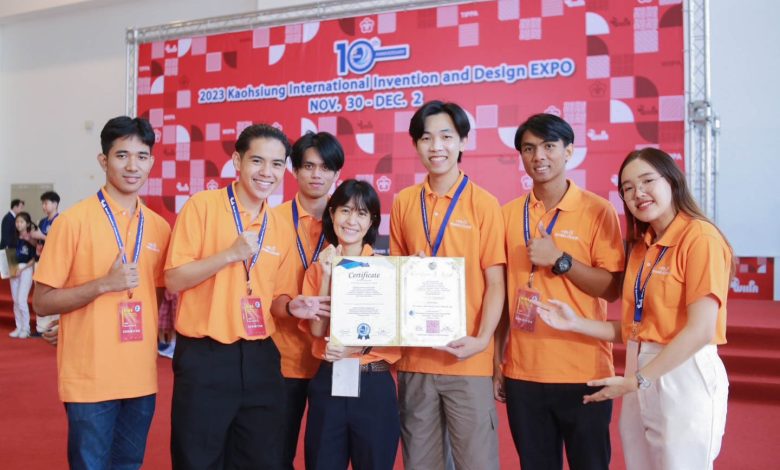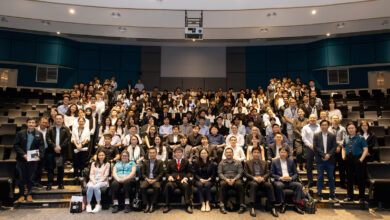Thammasat Students Win Motion Analysis Innovation for Wheelchair Athletes

The student team from Thammasat University has been awarded the highest honor, the Platinum award, and a gold medal at the 2023 Kaohsiung International Invention & Design Expo in Taiwan for their innovation project titled “YES Wheelchair: motion analysis system for wheelchair users.”
YES Wheelchair innovation is a collaboration between students and professors from the Faculty of Allied Health Science and the Faculty of Engineering, Thammasat University. The students from the Faculty of Allied Health Science include Wisanu Kraijindaporn and Tharakorn Sukthai. The students from the Faculty of Engineering include Sitaphon Anekthanarojkul, Jakphat Chokchaisiri, Nattawat Nilpinij, and Chutipon Treerattananurak. The project is supervised by Asst. Prof. Dr. Sairag Sa-adprai from the Department of Sports Science and Sports Development, Faculty of Allied Health Science, and Asst. Prof. Dr. Supachai Vorapojpisut from the Department of Electrical and Computer Engineering, Faculty of Engineering.
What is YES Wheelchair?
Asst. Prof. Dr. Sairag explains that currently there are devices that measure body movement for health care purposes, such as smart watches. However, for wheelchair users, there is still no device available for monitoring and assessing their movement which provides crucial information for the development of physical capabilities. YES Wheelchair is an innovation designed to measure various aspects of wheelchair movement, including distance, speed, energy expenditure, and even detect falls. Initially, the main users are wheelchair athletes, so that coaches and athletes can benefit from assessing their physical capabilities for future improvements.
Principles of Innovation
Jakphat explains the working principles of the YES Wheelchair innovation that it is an innovation for monitoring the movement through sensors attached to the wheels of the wheelchair and the wrist sensors attached to the users. It utilizes The Internet of Things (IoT) technology, which aids in collecting data through sensor devices, eliminating the need for users to manually input data.
The sensor attached to the wheelchair wheel aims to measure and analyze the user’s movement in order to connect with the display tool. Before using it, the basic user information such as weight and height must be entered to provide preliminary analysis. The sensor works by detecting the wheel rotation, and the results are displayed on the screen according to the selected testing mode, such as the one stroke push test or the muscle power sprint test during wheelchair movement. The real-time data shown on the screen includes muscle power, distance, time, speed, and acceleration. These data can be used by experts to design physical exercise or improve physical fitness for wheelchair users.
In addition, there is also a Fall Detection System. When a fall occurs, the sensor will send data to be displayed on the notification screen in red. The Wrist Sensor will measure heart rate and oxygen levels in the blood, and the data will be displayed as a graph on the screen.




